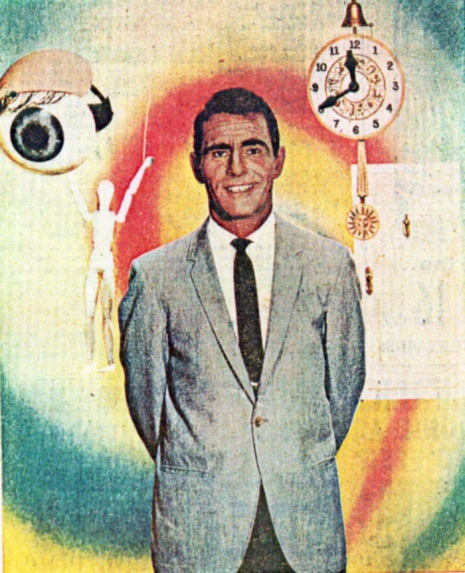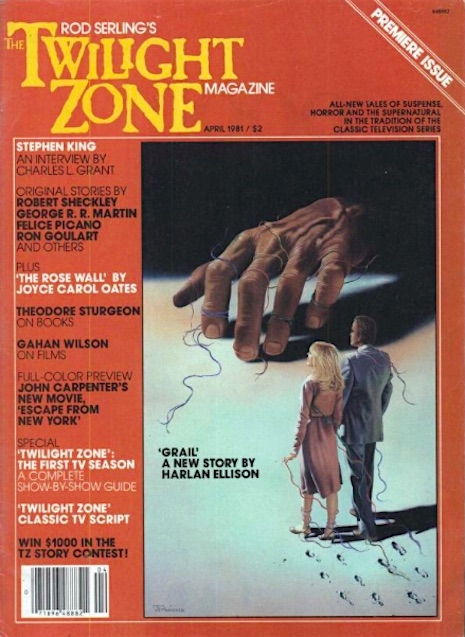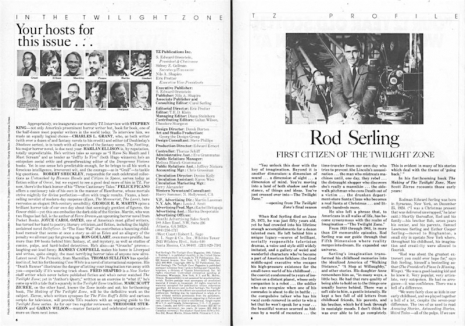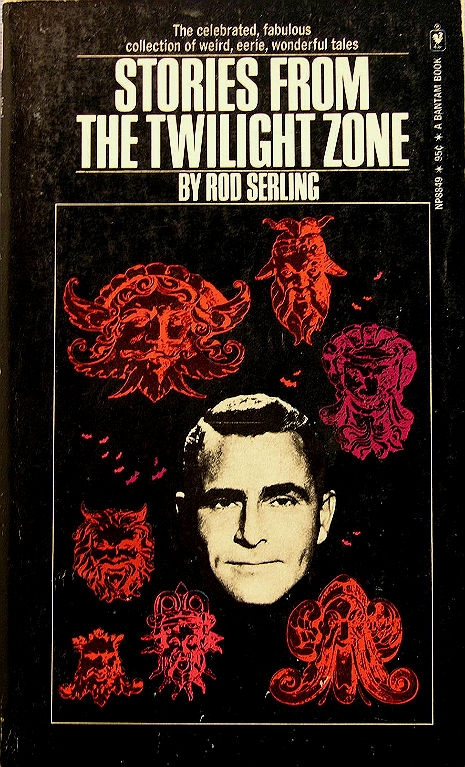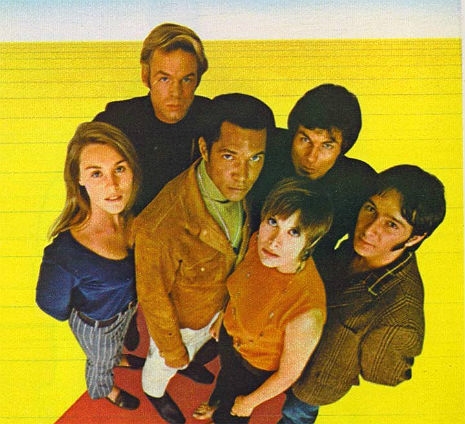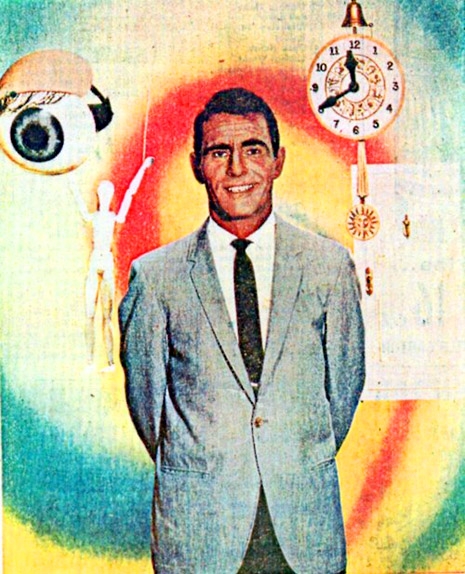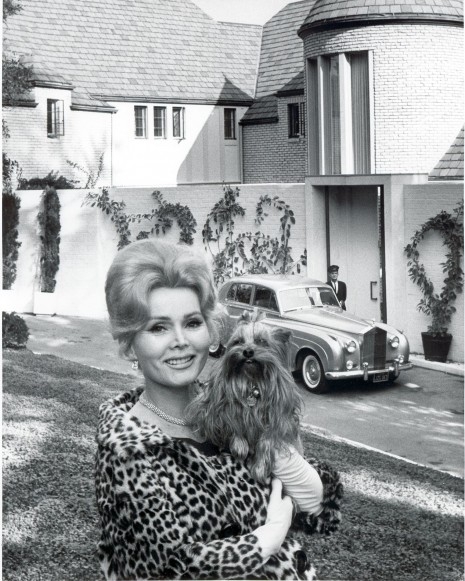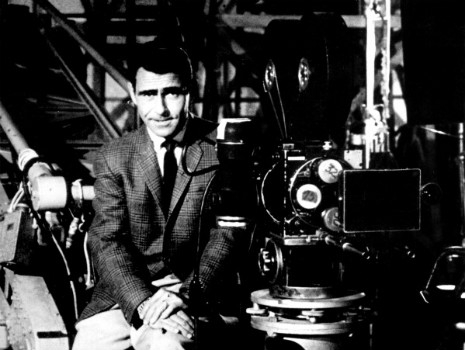
“Something in the Woodwork”—click image for larger version
When it comes to innovators who have managed to push the medium of television to its absolute limits, the name Rod Serling has to top the list. In his groundbreaking series The Twilight Zone, he used his own original stories (as well as adaptations of works by some of the most imaginative writers in history) to teach simple moral truths by wrapping them up and disguising them in the various cloaks of fantasy, science fiction and horror. You might think you were merely watching a science fiction story, when, in fact, Rod Serling was busy teaching you how to be a more decent human being. The disguise made the truths somehow more interesting and easy to digest, but make no mistake, The Twilight Zone was teaching important lessons about topics as diverse as war, racism, xenophobia, and even standards of beauty.
Night Gallery, Rod Serling’s follow up to the highly successful Twilight Zone series, only lasted for three seasons before imploding under the pressure of internal conflicts. It seems that in a complete lapse of sanity, Jack Laird, the show’s producer, forgot a fundamental maxim of making great television: allow Rod Serling to do whatever he wants to do. Nevertheless, the show managed to squeak out a run on NBC from 1970-72.
The premise of Night Gallery centered around Serling as the curator of a Museum of the Macabre, and he would introduce the shows various segments with a piece of art that represented the basic story on canvas. These stories still mined the areas of fantasy, science fiction and horror which Serling knew so well—again utilizing his own original teleplays as well as adapting works by such writers as H.P. Lovecraft, August Derleth, and Robert A. Heinlein for the small screen—but at an hour’s running time, the show could present multiple segments, some of the more whimsical segments clocking in at under five minutes.
Unfortunately, the show was severely butchered for syndication. It was trimmed down from an hour to a mere thirty minutes, and many of the original segments suffered as a result. Longer pieces had to be edited down to fit, and shorter pieces had to be expanded to fill time. Also, the syndication package damaged the Night Gallery franchise further by coupling the original Night Gallery segments with an inferior show starring Gary Collins called The Sixth Sense and presenting them under the Night Gallery banner. Rest assured; they are not even close to being Night Gallery episodes. The Sixth Sense, too, was originally an hour in length, but it featured a single storyline each week. Editing these awful hour-long shows down to thirty minutes proved to be an example of how presenting less of something horrible can sometimes result in something even worse. Many episodes became downright incoherent.
The three works of art used in the pilot episode of Night Gallery were painted by Jaroslav “Jerry” Gebr, who was later brought back to paint the works used to introduce the episodes of The Sixth Sense that were combined with Night Gallery in syndication. The rest of the paintings for the Night Gallery series proper were done by Tom Wright, who currently works as a TV director (The X-Files, Millennium, The Wire, NCIS).
After Night Gallery was cancelled, many of the artworks used to introduce the stories were either altered for use in other productions, or sold by Universal Studios. Most of them remain in private hands, but occasionally, one will surface at an auction house. Surprisingly, there have been known cases of forgeries of some of these paintings. In December of 2002, two forgeries were offered in an online auction from Sotheby’s through eBay. One of the forgeries was pulled before the auction began, but the fact that forgeries even exist, and that people are willing to risk purchasing one serves as proof that these iconic paintings still generate public interest.
Well, just like in an episode of The Twilight Zone or Night Gallery, your wishes have come true. Now, you can study these paintings online at your leisure. The Night Gallery website has recently published the original pieces used in the series (excluding the pieces that accompanied episodes of The Sixth Sense in syndication, of course). You can now gaze and marvel at these incredible works of art in-between watching episodes of Night Gallery online at Hulu.com.
These paintings REALLY creeped me out as a kid. Somehow, they aren’t quite as pants-shittingly scary as an adult viewing them on a crystal clear office monitor instead of as a kid absorbing them through a staticky 26-inch cathode-ray-tube in a darkened room, but they’re still fascinating works. All of them are available for viewing on the Night Gallery site, but here’s a small day gallery of the best works.
You can click on the image to see a larger version.

“The Cemetery”

“Eyes” (Joan Crawford, obviously)
The ‘Night Gallery’ gallery continues, after the jump…
Posted by Christopher Bickel
|
10.06.2015
09:21 am
|
